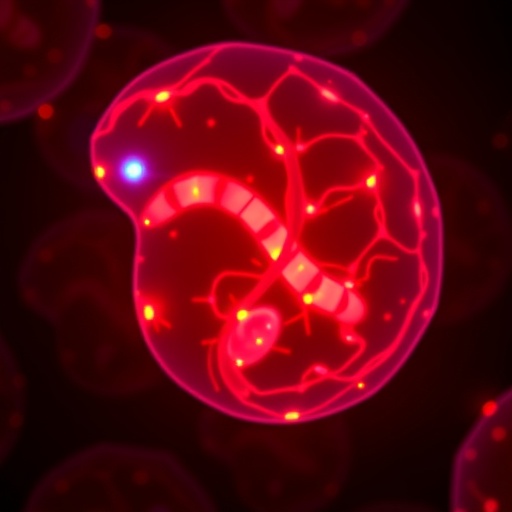Neuropathic pain remains one of the most challenging conditions to treat, with millions of sufferers worldwide experiencing debilitating and persistent discomfort. Recent advances in molecular neuroscience have provided deeper insights into the epigenetic mechanisms that govern pain perception and modulation. A groundbreaking study published in Nature Communications in 2025 by Ma et al. introduces a pivotal regulator in the complex epigenetic landscape of neuropathic pain. This regulatory protein, named ZFP612, exerts control over neuropathic pain through epigenetic repression of the Il1rl1 gene in primary sensory neurons, opening new avenues for therapeutic intervention.
The research team focused on elucidating how epigenetic modifications influence gene expression within sensory neurons that are critical to the initiation and maintenance of neuropathic pain. Epigenetics, comprising DNA methylation, histone modifications, and chromatin remodeling, plays a significant role in turning genes on or off without altering the underlying DNA sequence. ZFP612, a zinc finger protein previously uncharacterized in this context, was identified as a major player orchestrating the repression of Il1rl1, a gene encoding a receptor implicated in inflammatory pain signaling.
By employing male mice models subjected to neuropathic injury, Ma and colleagues meticulously dissected the neural mechanisms that underlie persistent pain states. Their experimental design combined behavioral pain assessments with advanced molecular techniques such as chromatin immunoprecipitation followed by sequencing (ChIP-seq). These methods revealed that ZFP612 binds to specific silencer regions creating a closed-loop between the gene’s promoter and silencer elements, effectively preventing transcriptional activation of Il1rl1.
The significance of the silencer–promoter loop lies in its ability to maintain the gene in a transcriptionally repressed state. This three-dimensional chromatin structure imposes tight control over Il1rl1 expression, ensuring that the receptor’s inflammatory pathways remain subdued under normal conditions. However, in neuropathic pain states, disruptions in this loop may lead to aberrant gene activation, exacerbating inflammatory signaling and sustained pain sensitivity.
Importantly, the study delineates that ZFP612’s regulatory function is specific to male mice, suggesting sex-specific epigenetic regulatory mechanisms in pain processing. This observation calls for a nuanced understanding of how sex differences contribute to the prevalence and persistence of neuropathic pain and may explain why some treatments show differential efficacy between males and females.
The molecular insights provided by this study extend beyond mere gene expression modulation; they highlight the role of complex chromatin architecture in sensory neuron function. By repressing Il1rl1 through an epigenetic silencer–promoter loop, ZFP612 acts as a molecular gatekeeper, limiting excessive inflammatory signaling that would otherwise heighten pain perception. This discovery underscores the multifaceted nature of pain epigenetics, encompassing not only individual gene regulation but also the spatial organization of chromatin.
Therapeutic targeting of ZFP612 or the associated silencer–promoter loop structures could revolutionize approaches to neuropathic pain management. Current analgesics are often limited by efficacy and side effects, while gene therapy or small molecules designed to modulate epigenetic regulators offer promise for more precise intervention. The identification of ZFP612 as a key repressor opens the door to drug development efforts aimed at restoring proper epigenetic control in pain-related genes.
Moreover, this research highlights the importance of studying chromatin topology and its functional repercussions in disease states. The three-dimensional arrangement of chromatin constituting silencer-promoter loops is increasingly recognized as an essential layer of gene regulation. The integration of epigenomic profiling with functional assessments in neuronal circuits, as performed by Ma et al., exemplifies the power of multidisciplinary research in unraveling complex disease mechanisms.
This work also emphasizes the role of primary sensory neurons as not just passive conduits for pain signals but as dynamic centers of gene regulation that adapt epigenetically to injury. Understanding how neurons engage epigenetic machinery to regulate gene expression in response to pathological stimuli is crucial for developing therapies that block the transition from acute to chronic pain states.
ZFP612’s selective repression of Il1rl1 in primary sensory neurons reveals new biology in the inflammatory pathways contributing to neuropathic pain. Il1rl1, also known as the interleukin-33 receptor (ST2), activates downstream cascades leading to inflammatory mediator release and nociceptor sensitization. Controlling this receptor’s expression epigenetically may thus calibrate the neuronal inflammatory response and reduce pain hypersensitivity.
The sex-specific findings underscore the need for personalized pain medicine approaches that take into account biological variability between males and females. Epigenetic regulators like ZFP612 may exhibit differential expression or activity across sexes, shaping distinct epigenomic landscapes and therapeutic susceptibilities. Future studies will be essential to explore these dimensions and translate findings toward clinical application.
Collectively, the notion of epigenetic repression via chromatin looping expands our paradigm for gene regulation in pain pathophysiology. It moves beyond classical promoter or enhancer-centric views to incorporate higher-order chromatin interactions as critical determinants of gene expression states. ZFP612 exemplifies how transcriptional silencers cooperate with promoters through physical interactions driven by epigenetic readers and writers to maintain neuronal homeostasis.
The implications extend to other neurological disorders where epigenetic dysregulation and aberrant gene expression contribute to disease progression. Insights gained from the neuropathic pain model may inform broader strategies for modulating epigenetic architectures in the nervous system to restore normal function.
Ultimately, this pioneering research by Ma and colleagues provides a compelling framework for novel pain interventions grounded in molecular epigenetics. By unveiling ZFP612 as a master regulator modulating pain-relevant gene expression through chromatin looping, it sets the stage for transformational advances in understanding and treating neuropathic pain. Further exploration of these pathways holds promise for alleviating suffering and improving quality of life for those afflicted by chronic pain.
Subject of Research: Epigenetic regulation of neuropathic pain mechanisms in primary sensory neurons of male mice
Article Title: ZFP612 controls neuropathic pain through epigenetic repression of Il1rl1 within the silencer–promoter loop in primary sensory neurons of male mice
Article References:
Ma, L., Huang, Y., Han, M. et al. ZFP612 controls neuropathic pain through epigenetic repression of Il1rl1 within the silencer–promoter loop in primary sensory neurons of male mice. Nat Commun 16, 10701 (2025). https://doi.org/10.1038/s41467-025-65935-1
Image Credits: AI Generated
DOI: https://doi.org/10.1038/s41467-025-65935-1




